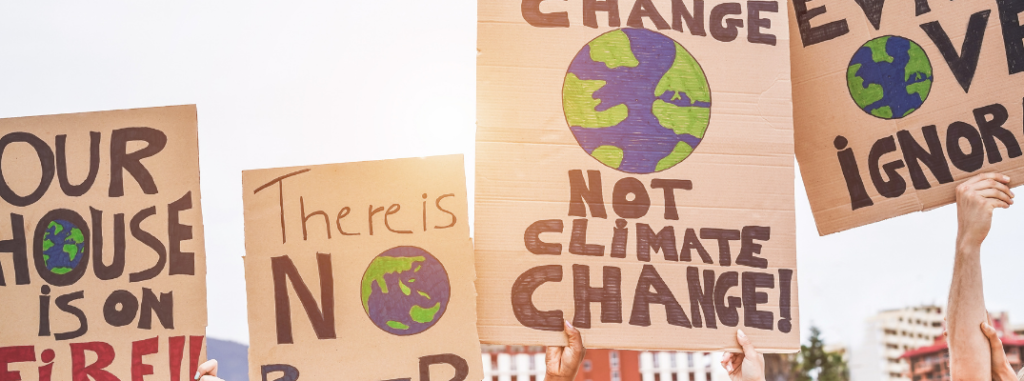Original post on Washington Post
The historian Arnold Toynbee famously argued that the well-being of a civilization can be judged by its ability to respond to human and environmental challenges. The Donald Trump administration’s full-throttle reverse course aimed at renewing fossil fuels as the chief source of energy — as the planet faces the droughts, deluges and firestorms of climate change — would seem to indicate an unwell civilization indeed.
Yet what’s missing from such a dire verdict is that the response to climate change is so distributed that we don’t apprehend the massive changes actually taking place. In today’s world, we no longer have to go up the tree of political authority to make something happen. People can do it on their own, through interconnectedness with others.
“Our civilization has developed extraordinary capacities, but we are unable to see the image they produce,” the celebrated designer and “Massive Change” author Bruce Mau has said. “It is as if that image has been cut up into the billion pixels of everyone’s contribution, and we can only see the pixel that we are working on but never the image as a whole.” As only someone with the eye of a designer like Mau might put it, “The important challenge is to maintain the visibility of accomplishments — the whole image — so the momentum toward massive change grows.”
In The WorldPost this week, we make a small contribution to pulling together the pixels into a whole image by sampling the widely dispersed responses to climate change, from research into carbon capture to coral nurseries in the Florida Keys, the growth of green jobs in California’s oil belt, and conservation agriculture in North Carolina.
“Farewell to Ice” author Peter Wadhams points out the “stock-flow” conundrum of de-carbonizing the planet — the problem is not only new emissions but the already damaging levels of carbon deposited in the atmosphere from past burning of fossil fuels that will remain for hundreds of years. “If we want to survive climate change, we must double down in research manpower and dollars to find and improve technology to remove carbon dioxide — or at least reduce its effects on the climate,” he writes.
“We now emit 41 billion tons of carbon dioxide per year. The current level of carbon dioxide in the atmosphere is already high enough to bring about a warming of more than 2 degrees after it has worked its way through the climate system, so if we want to save the Paris accord, we must either reduce our emissions to zero, which is not yet possible, or combine a significant emissions reduction with the physical removal of about 20 billion tons of carbon dioxide from the atmosphere per year indefinitely.” The only answer, according to Wadhams, is new carbon capture technologies that reduce the stock of carbon, some of which are employed in innovative projects in Houston, Iceland and elsewhere.
Marine ecologist John Bruno reports on innovative efforts to regenerate coral reefs — thus saving the “tropical forests” of the ocean — that are getting bleached to death by warming seas. Bruno documents several such projects, from a coral restoration nursery off the Florida coast where marine biologists are growing and replanting new coral on degraded reefs, to the experiments of molecular biologists using cutting-edge gene editing tools like CRISPR to alter the DNA of corals so they can better withstand rising temperatures.
From the oil belt of California’s San Joaquin Valley, Bridget Huber reports that climate policies are not killing jobs, but creating them. Through the prism of on-the-job training and apprenticeship programs of the ironworkers’ and electrical workers’ unions in Fresno, she traces the return of robust job and wage growth to what had become a depressed economic zone. This is largely thanks to state mandates to meet requirements for renewable energy production. “Solar saved our bacon,” one veteran ironworker told her. Also contributing in a major way to high-wage employment, she reports, are the construction jobs associated with California’s massive high-speed rail project running through the region.
Brian Barth reports from farms in eastern North Carolina where pork production giant Smithfield Foods — the largest producer of pork in the world — has rolled out efforts to reduce the carbon footprint of its meat production “According to the Intergovernmental Panel on Climate Change,” writes Barth, “agriculture accounts for about a quarter of global greenhouse gas emissions, roughly the same as the combined total for electricity and heating, and well above the transportation sector, which contributes just 14 percent. Add emissions from refrigeration, shipping and other activities required to get your dinner from farm to plate, and the food system’s share of global greenhouse gases climbs to roughly a third, making it easily the most climate-unfriendly sector of the global economy.”
Barth discusses Paul Hawken’s book “Natural Capitalism,” in which the environmentalist lays out the top 100 solutions to climate change. Of these, “11 are related to food systems, seven to energy systems and none to transportation systems. Electric vehicles are #26, while ‘tree intercropping’ — planting strips of apple trees throughout a corn field, for example — is #17. The top food-related practices — reducing food waste (#3) and switching to a plant-rich diet (#4) — are largely consumer-driven solutions.” Yet Barth’s reporting suggests that farmers and producers play a crucial part in reducing emissions as well. Barth also discusses silvopasture — a “mashup of forestry and grazing” — which is the highest-ranked agricultural solution to climate change in Hawken’s analysis.
The challenge for all these distributed cases of climate action is how to scale them up to realize the potential for massive change as the clock ticks. The political roadblocks of vested interests which always resist change aside, what has been true throughout history is that, in the end, scale and resources follow cultural commitments. That commitment will only grow deeper if society becomes more fully aware of the whole picture of what it is already doing.

